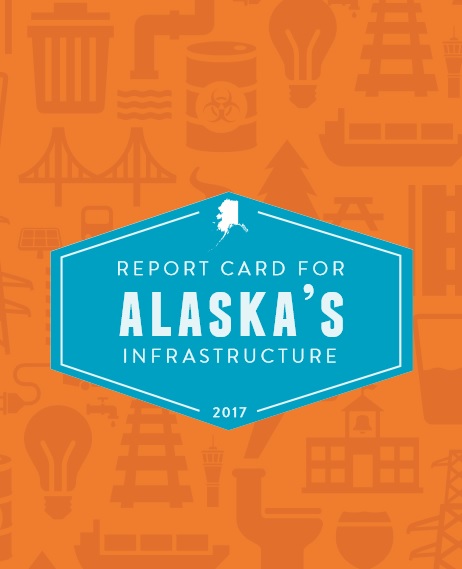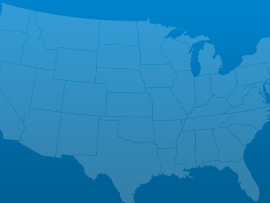 Alaskans think about infrastructure a little bit differently than the rest of the United States. Alaska’s infrastructure is truly unique, covering a vast area of over 663,000 square miles and supporting a population of just over 730,000. For transportation systems, there is no one mode of transport in Alaska, and sometimes the route is different depending on the time of year. Some homes do not have access to indoor plumbing, and while sometimes that’s by choice, too often it’s not. Many of Alaska’s remote communities are still in need of water and wastewater systems that are safe, efficient, and sustainable, while even our most populated areas are still learning how best to handle every day solid waste in a subarctic environment. Alaska’s infrastructure investment is crucial to our way of life and the success of the economy. With declining oil prices and federal funding sources that cannot keep up with the demand for projects and operations and maintenance needs of current systems, the American Society of Civil Engineers (ASCE) Alaska Section wants to ensure Alaska’s leaders have the best information available about the current conditions of Alaska’s infrastructure. As Alaska legislators address budget challenges, the Alaska Report Card – developed for Alaska, by Alaskans – demonstrates the importance of infrastructure investment. There are solutions to Alaska’s poor infrastructure grades! Together with the information provided in the Report Card for Alaska’s Infrastructure, it is ASCE Alaska Section’s hope that Alaska’s Civil Engineers can work together with state leaders to plan, design, build, operate and maintain safe, efficient and sustainable infrastructure for all Alaskans.
Alaskans think about infrastructure a little bit differently than the rest of the United States. Alaska’s infrastructure is truly unique, covering a vast area of over 663,000 square miles and supporting a population of just over 730,000. For transportation systems, there is no one mode of transport in Alaska, and sometimes the route is different depending on the time of year. Some homes do not have access to indoor plumbing, and while sometimes that’s by choice, too often it’s not. Many of Alaska’s remote communities are still in need of water and wastewater systems that are safe, efficient, and sustainable, while even our most populated areas are still learning how best to handle every day solid waste in a subarctic environment. Alaska’s infrastructure investment is crucial to our way of life and the success of the economy. With declining oil prices and federal funding sources that cannot keep up with the demand for projects and operations and maintenance needs of current systems, the American Society of Civil Engineers (ASCE) Alaska Section wants to ensure Alaska’s leaders have the best information available about the current conditions of Alaska’s infrastructure. As Alaska legislators address budget challenges, the Alaska Report Card – developed for Alaska, by Alaskans – demonstrates the importance of infrastructure investment. There are solutions to Alaska’s poor infrastructure grades! Together with the information provided in the Report Card for Alaska’s Infrastructure, it is ASCE Alaska Section’s hope that Alaska’s Civil Engineers can work together with state leaders to plan, design, build, operate and maintain safe, efficient and sustainable infrastructure for all Alaskans.
 Aviation
Aviation Bridges
Bridges Dams
Dams Drinking Water
Drinking Water Energy
Energy Marine Highways
Marine Highways Roads
Roads Solid Waste
Solid WasteA: Exceptional, B: Good, C: Mediocre, D: Poor, F: Failing, ?: Incomplete
Each category was evaluated on the basis of capacity, condition, funding, future need, operation and maintenance, public safety, resilience, and innovation
Aviation
257 public-use airports
Bridges
133 of the 1,196 bridges are structurally deficient
Bridges
$12.90 million in bridge funds came from the Federal Highway Bridge Fund in 2011
Dams
70% of the state regulated dams have an Emergency Action Plan
Dams
20 high hazard dams
Drinking Water
$812 million in drinking water infrastructure needs over the next 20 years
Energy
1.452 gigawatt-hours of renewable energy every year, ranking it 42nd
Hazardous Waste
6 sites on the National Priorities List
Inland Waterways
5,500 miles of inland waterways, ranking it 1st nationally
Levees
27 miles of levees
Ports
41 million short tons of cargo in 2012, ranking it 19th nationally
Public Parks
$3.1 million of unmet needs for its parks system
Rail
1 freight railroads covering 506 miles across the state, ranking 45th nationally by mileage
Roads
$192 million a year in costs to motorists from driving on roads in need of repair, which is $366 /yr per motorist
Roads
2,654 of the state’s 16,301 public roads are major roads, and 19% are in poor condition
Schools
$776.0 million in estimated school infrastructure funding needs
Transit
5.1 million annual unlinked passenger trips via transit systems including bus, transit, and commuter trains

March 03, 2017
As the President’s repeated in his address to Congress his pledge to dramatically increase infrastructure spending to the tune of $1 trillion, various Congressional Committees

March 01, 2017
On Tuesday night, President Trump addressed a joint-session of Congress for the first time in his presidency. Infrastructure was among the many issues he discussed.

February 28, 2017
U.S. motorists set a new record for vehicle miles travelled (VMT) in 2016, driving over 3.2 trillion miles, an increase of 70 billion miles from

February 17, 2017
Romantic dates, the Grammy awards and celebrating black history are not the only milestones of this week; the Oroville dam crisis in California and the